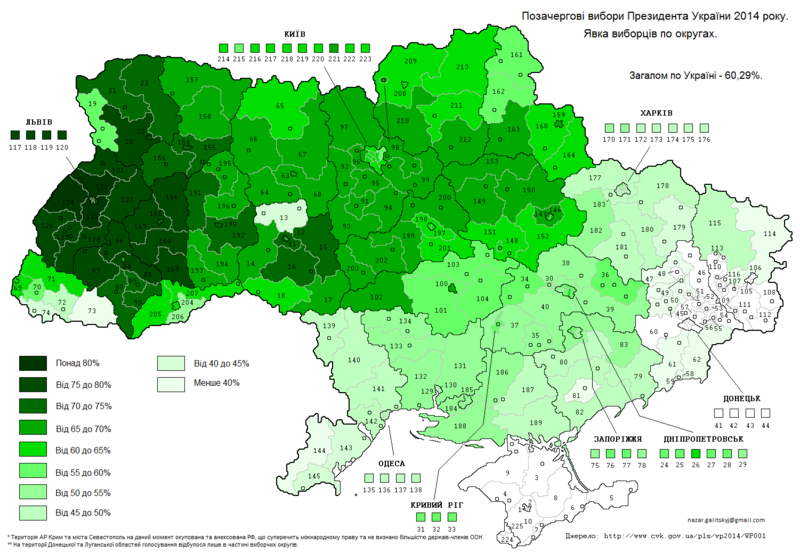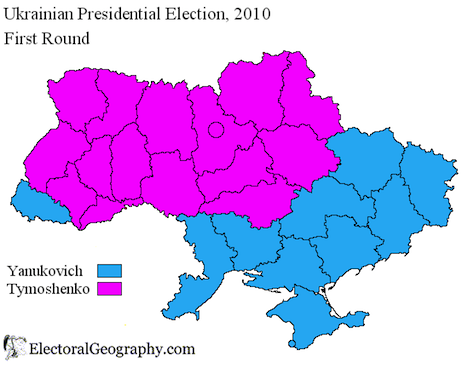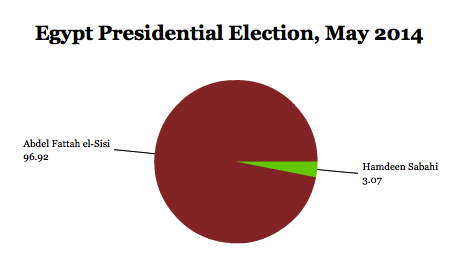Though business tycoon and pro-Western opposition figure Petro Poroshenko easily won election as Ukraine’s next president in last Sunday’s election, the final numbers suggest that he’ll take the helm of a divided country.![]()
Here’s a map of turnout nation-wide:
What’s immediately apparent is that turnout was extremely low in the eastern oblasts that have been the scene of several pro-Russian separatist movements. Notably, many parts of Donetsk oblast didn’t even participate in the election.
Though Poroshenko won 54.70% of the vote, with other candidates barely winning more than single digits, he’ll be hard pressed to argue that he has a mandate from the eastern Ukrainians who now feel so alienated from Kiev’s central government and the rest of the country.
* * * * *
RELATED: In-depth: Ukraine’s elections
* * * * *
It’s a far cry from the 2004 and 2010 presidential elections, which saw voting highly polarized, also on west-east lines. But compare the map of turnout in the 2014 election to the following map showing the relative support of Viktor Yushchenko and Viktor Yanukovych in 2004 and the relative support of Yulia Tymoshenko and Yanukovych in 2010:
There’s an obvious link between the support for Yanukovych in 2004 and 2010 and regions with depressed turnout in 2014.
It’s same Ukrainian divide that’s only become more pronounced over the past decade. Accordingly, the lesson of the 2014 election isn’t so much that Poroshenko has magically and suddenly united Ukraine, it’s that eastern Ukrainians have been effectively disenfranchised.
Note, also, that Russia’s annexation of Crimea in March has removed another bloc of voters that, in 2004 and 2010, opposed Ukraine’s pro-Western presidential candidates.
Since the election, Poroshenko has indicated that he’ll take a hard line against eastern separatists in Donetsk and Luhansk oblasts, and, if anything, fighting between Ukrainian forces and the separatists has escalated since May 25, with a particularly deadly clash over the Donetsk airport. Continue reading A closer look at Ukraine’s election results




